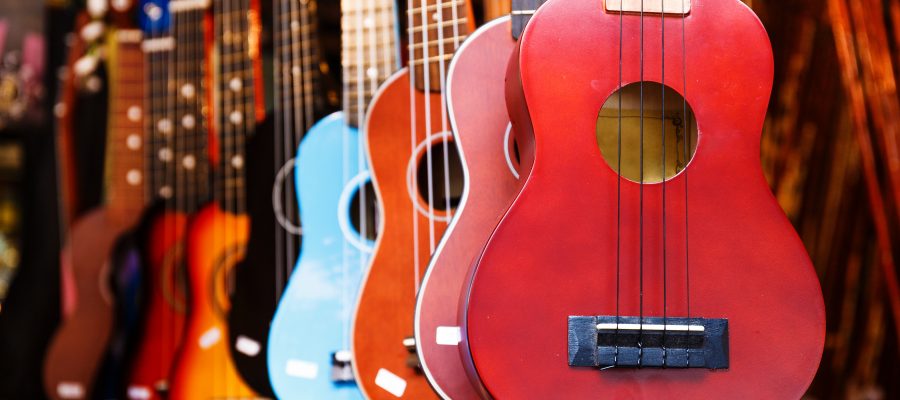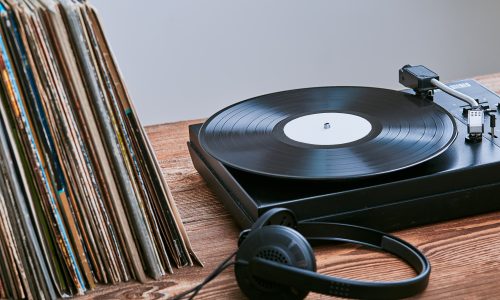The Best Ukulele

Our Review Process
Don't Waste Your Money is focused on helping you make the best purchasing decision. Our team of experts spends hundreds of hours analyzing, testing, and researching products so you don't have to. Learn more.
Our Picks For The Top Ukuleles
- 1. Everjoys Gig Bag & Soprano Ukulele
- 2. Donner Tuner & Mahogany Concert Ukulele
- 3. RockJam Chord Book & Soprano Ukulele
- 4. POMAIKAI Beginner Basswood Soprano Ukulele
- 5. Kmise Starter Kit & Mahogany Soprano Ukulele
- 6. Hola! Music Maple & Walnut Soprano Ukulele
- 7. AKLOT Online Courses & Solid Mahogany Concert Ukulele
- 8. iECO Beginner Kit & Basswood Soprano Ukulele
- 9. Ranch Aquila Strings Set & Sapele Concert Ukulele
- 10. ADM Strap & Basswood Soprano Ukulele
Designed for beginners, this kit includes a 21-inch ukulele, a digital tuner, a strap and a songbook that guides you through learning to play and a carrying bag. The ukulele is built with basswood and solid wood to give you a traditional soprano sound. The nylon strings use a different color for each note to make it easier to learn.
Perfect for BeginnersThis beginner’s kit will help get you started playing the ukulele.
Mahogany gives this ukulele a crisp, rich sound whether you’re a newcomer to the instrument or a pro. The set comes with a gig bag, tuner, picks and a cleaning cloth. The gig bag features two padded shoulder straps to make it easy to take on the go with you.
Sturdy and ReliableWell-polished rosewood and mahogany combines with carbon nylon strings for a build that will last.
Made from basswood with a high-gloss finish, this ukulele is lightweight and small enough for younger players as well as adults. The ergonomic design keeps you comfortable while you play and the gig bag lets you take it on the go with you. It includes a beginners guide to help get you started.
Lightweight and ComfortableFeaturing a lightweight build and ergonomic design, this ukulele is easy to carry and comfortable to use.
The smaller size and bright color options make this ukulele ideal for children. The basswood body creates the same quality sound you’d get from an adult version, and sturdy nylon strings keep your fingers comfortable while you play. It comes with a gig bag and has a lightweight build to make it easy to carry around.
Colorful OptionsFun pastels make this kids ukulele a great way to express your unique style.
Buying Guide
The past few years have seen a renewed interest in making music, with the pandemic pushing many to pick up an instrument they’ve always wanted to learn. But even before the pandemic, the ukulele was seeing a return to mainstream culture, both in homes and in the classroom. The instrument has it all. Ukuleles are small, affordable and easy to learn. They’re also quiet when compared to other instruments, making them great for practicing in a home full of people.
The ukulele is a close cousin to the guitar. However, it’s smaller and has only four strings, giving it a smaller range than the guitar. On the upside, this limitation makes it a great starter instrument. You can quickly master the ukulele, then move on to other string instruments. These features also make it an ideal choice for the younger people in your life.
Like other string instruments, ukuleles are constructed from wood. Spruce and mahogany are popular woods for ukuleles, but traditional Hawaiian ukuleles are made from koa wood. That said, there are different types of ukuleles, and the type plays a direct role in the sound it produces.
The types of ukuleles are:
- Soprano: The smallest of the ukuleles, this instrument has a shallow, thin tone. This type of ukulele produces the traditional sound often associated with the instrument.
- Concert: With a wider neck and slightly longer overall length, this ukulele type still features the traditional sound, but it packs a little more warmth into its tone.
- Tenor: This option, popular with more advanced musicians, is closer in size to the guitar while still being easy to learn. You’ll get a deeper tone with this instrument, bringing more bass to the traditional ukulele sound.
- Tenor XL: Similar to the tenor but slightly larger, this ukulele is popular with those who want the simplicity of a ukulele but who have larger hands.
- Baritone: The largest ukulele, the baritone produces the widest range in tone and has plenty of room for fingerpicking.
- If you’re new to the ukulele, you might want to start with a soprano or concert and work your way up to the baritone as you gain experience. Also, look for one that offers directions or online instruction. You should be able to find some great courses and books online if you’re serious about mastering the instrument.
What to Look For
- If you plan to take your ukulele on the go, you’ll need something to carry it in. For ukuleles, these cases are called gig bags, and the bags can vary in quality. Some have carrying straps that also vary in quality. You can purchase gig bags separately, so you aren’t limited to the one that ships with your instrument.
- As with guitars and pianos, ukuleles will occasionally need to be tuned to maintain peak performance. You can purchase a digital tuner that will help.
- Some beginner-geared ukuleles color-code the strings to make things easier while you’re learning the notes.
- If you want a ukulele that will last, pay close attention to the material used in its construction. The type of wood and quality of strings are especially important.
- Your fingers might tire after hours of practice. That’s where a pick can come in handy. You can buy them in sets so you’ll always have one nearby.
- Some ukuleles are more comfortable to use than others. If this is important to you, look for one that features an ergonomic design.
- Ukuleles come in a variety of fun colors. If you’re choosing one for the young aspiring musician in your life, a bright, lively color might be a great option.
- The hardware used in your ukulele is an important feature, as well. Pure copper can help your ukulele resist rust to hold up over many years.
More to Explore
Ukuleles have long been associated with the islands, which makes sense, considering they got their start in Hawaii. But the instrument was actually inspired by two Western European instruments, the cavaquinho and the machete.
Portuguese immigrants brought the machete in their luggage when they arrived in Hawaii, looking for work. Locals fell in love with the instrument, and soon the immigrants opened their own shops where they sold instruments and furniture.
Within a couple of decades, the ukulele had emerged as a local favorite, and the instrument became a staple of the Hawaiian Islands. As American tourists began vacationing in Hawaii in the 20th century, the ukulele gained nationwide popularity and has continued to thrive since.



















